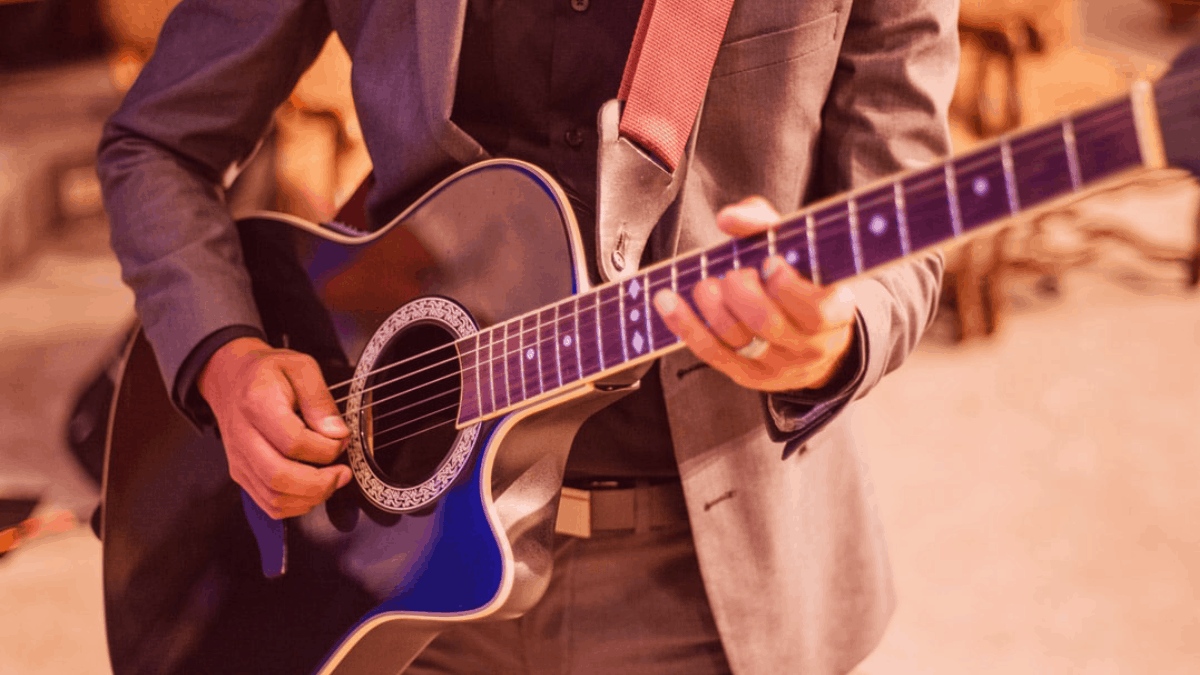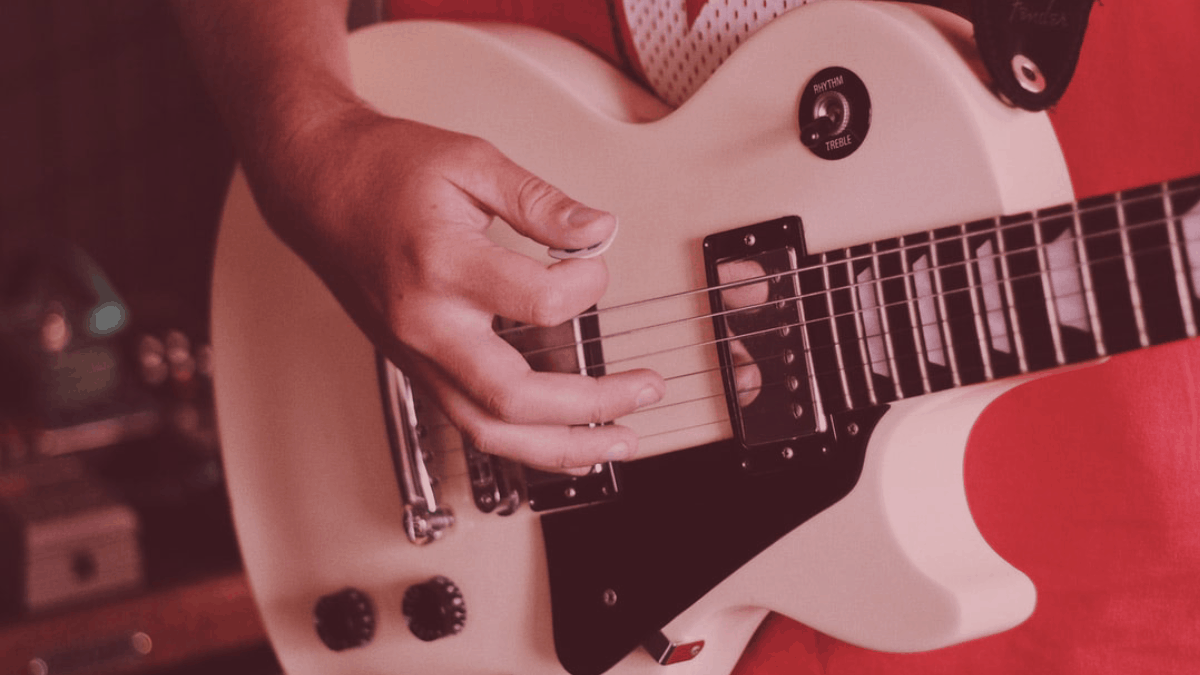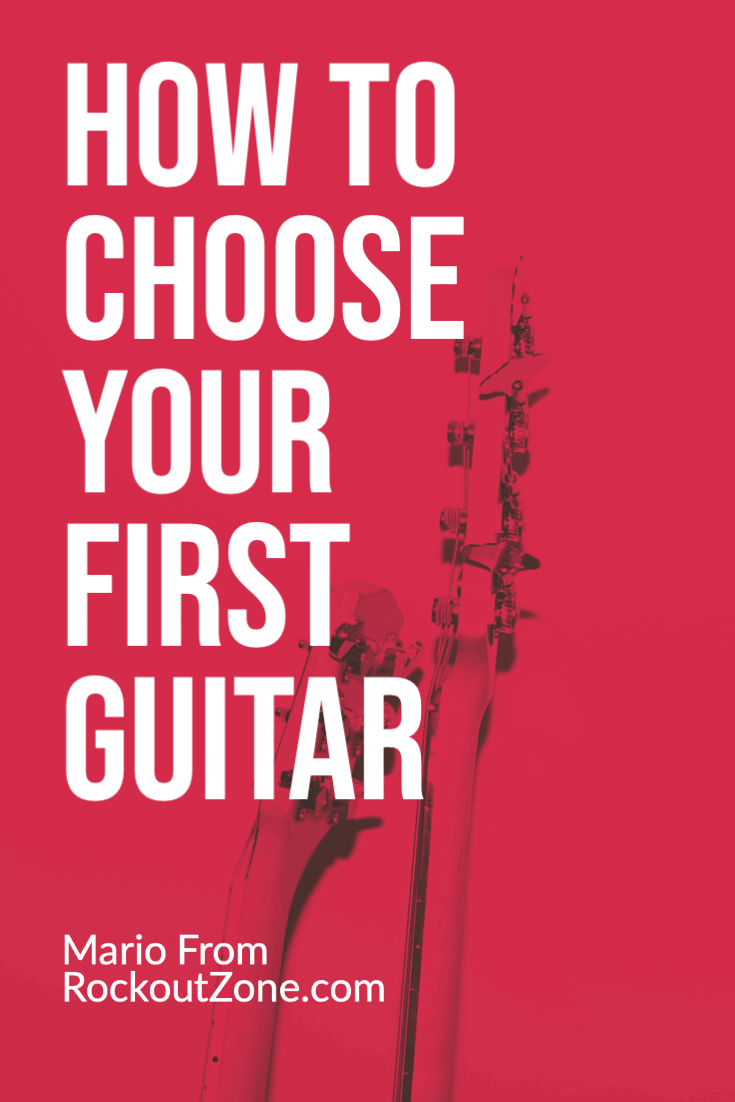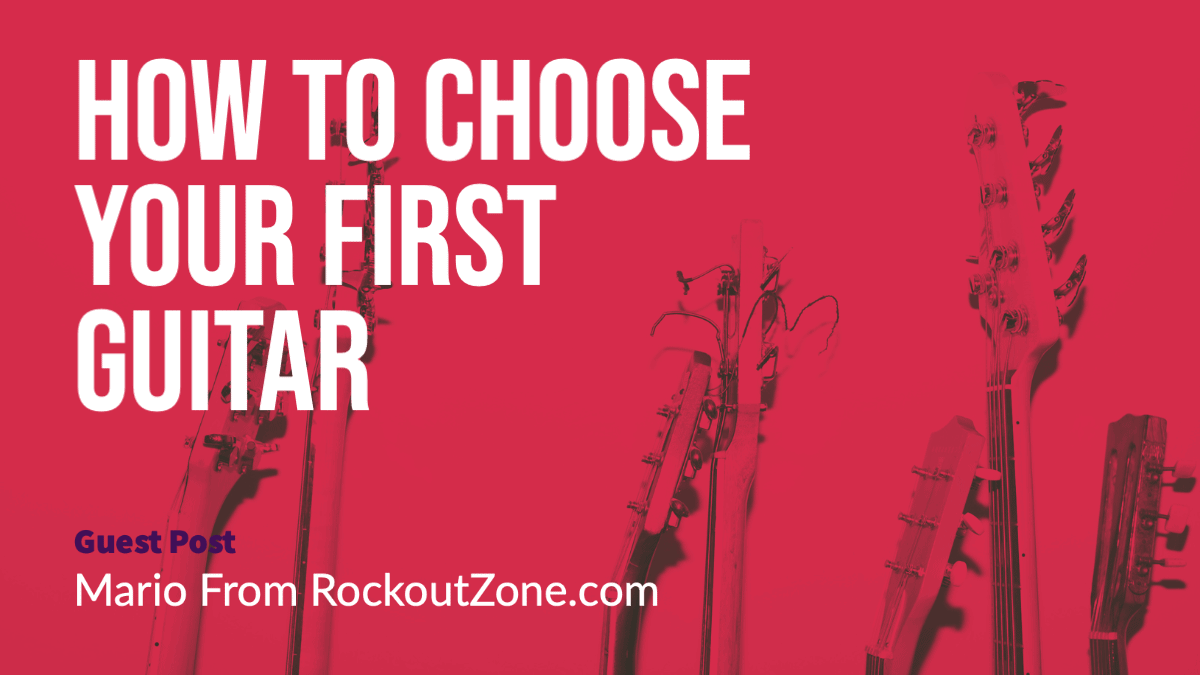
How To Choose The Type of Guitar
Depending on your personal preference, you can choose between an electric guitar, an acoustic guitar, or an acoustic-electric combo. These guitars are quite different from each other as they have different playability and sounds. With all three, the notes and chords are the same, but playing the notes, chords, and scales is, in fact, a different experience depending on the type of instrument.Electric Guitar
In today’s music, the electric guitar is the most popular instrument. It could be the perfect guitar to start your learning journey with. On their own, electric guitars create a faint sound, but if you connect them to an amplifier, you can create an ample variety of sounds in literally any music style you can dream of. If you want to play rock, pop, blues, country, and even R&B, the electric guitar is an excellent choice. Here are some advantages:- Easy to play.
- Available in all sizes.
- Produces a large variety of tones.
- Used in all genres of modern music.
Acoustic Guitar
When most people think of acoustics, they think of folk music. But, acoustic guitars are very versatile and produce many different sounds. Acoustics create a deep and rich sound without any amplification. They are most commonly used in country, folk, bluegrass, and soft music. If you want to begin learning the guitar on an acoustic, note that playing an acoustic is more challenging than electric. This is because the acoustic guitar’s neck is wider, and the strings are harder to press down. Here are some of the advantages:- Doesn’t need extra amplification.
- Produces a bright, pleasant sound.
- Cheaper because it doesn’t need an amp.
- Can be used by singer-songwriters to compose their own music.

Acoustic-Electric Guitar
This is a combo guitar, a mix between the acoustic and the electric. The guitars sound like acoustics, but you can plug them in and amplify them, just like electrics. Because they have more features, these guitars are more expensive. You will get features such as an on-board equalizer which provides tone control. This type of guitar is an excellent choice if you plan on playing in a band or taking center stage. Performers prefer this type of guitar because it gives off lovely acoustic sounds, which are easily amplified in a large venue.New vs. Used Guitars
As you buy your guitar, consider if you want to buy new or used. You can find used guitars at low prices online. If you’re looking to learn and practice a lot, a second-hand guitar can be a great option before you move up to pro-level and invest in an expensive instrument. You can find some excellent classic models, such as a Gibson, at a fraction of the cost. New guitars are available at all price points. With a new guitar, you’ll get a manufacturer’s warranty, so if anything goes wrong, you can return it. As well, the latest models have cutting edge technology that old guitars lack. The thing to look out for is that when you buy a new guitar online, it won’t be fine-tuned, so you’ll need to get some help to tune the guitar before you use it.
The Right Guitar Size
Starter guitars are available in different shapes and sizes, depending on if they’re made for children or adults. When choosing a guitar, consider how the guitar feels in your hands and how it fits with your body. If you have trouble reaching the chords, it’s not the right fit for you. Only buy a full-size model if you are an adult. If you are buying for a child or teen, consider a smaller size that the player can outgrow to move onto a full size eventually. Here is a general guide:- Kids aged 5-7: a half-size guitar (smallest size available)
- Older Kids aged 7-12: a three-quarter sized guitar.
- Teens 11+ and adults: a full-sized guitar.
Inspect the Guitar
Before you buy that first guitar, you need to check on several important aspects. Not all guitars are created equal, and you want to avoid buying a distorted/faulty guitar. Here’s what to look for:- Playability: is the instrument easy to play? Is the sound good?
- Condition: look at the components to make sure there is nothing broken, the body of the instrument is not cracked, and the shape of the neck is not distorted.
- Tuning: the guitar should have accurate tuning, which ensures the notes sound right, and you can play easily.
- Intonation and tone production: this might require an expert player to listen to the sounds and tell you if the guitar makes the correct tones.
Quality of Guitar
It’s a good idea to get an idea of both the type and budget of guitar that you want so that you can narrow your range of recommendations. If you know that you want a flamenco guitar, then you should look up guides on the best flamenco guitar options, and focus on those that fit within your price range. The broader your search is, the more difficult it will be to find those recommendations that really suit your needs. It can be tempting to buy a cheap guitar because you don’t know if you’ll stick to playing it. But, don’t make the mistake of investing any money into very flimsy and cheap instruments. A cheap guitar is actually tough to play because the neck and chords are not made well. As well, most inexpensive guitars are not adjustable, and you’ll notice the music just doesn’t sound good! A mid-price or high-quality guitar is your best bet. Now you’ve considered the main selling points of each guitar, it’s time to decide what you want to learn and what type of music you want to play. Once you touch and feel the guitar in your hands, you’ll know if it’s the right fit. Mario from RockoutZone.comCraig Smith is a professional Guitarist, Teacher, and Writer living in Sanford, Florida. Craig has taught guitar lessons, performed 200+ gigs per year for nearly 30 years, and published 4 guitar instructional books. When he’s not gigging or writing, you may find him by the pool with his wife Celeste, 4 Chihuahuas, and a drink. 🎸



